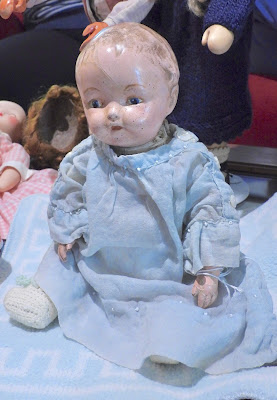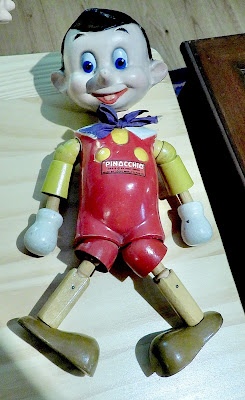Austin Doll Collectors Society
dollshow

AUSTIN DOLL COLLECTORS SOCIETY

Monday, April 1, 2024
March 10, 2024, Meeting
Friday, March 1, 2024
February 11, 2024, Meeting
Member Elaine Jackson lead the program, which was on books and dolls. She started out with one of the most famous books featuring a doll, Hitty. Hitty is the wooden doll heroine of Rachel Field's 1929 children's novel, Hitty, Her First Hundred Years. In the book, the eponymous Hitty (short for Mehitabel), a simple wooden doll carved by a peddler in the 1820s, narrates her adventures over her century of existence. Jackson explained that Fields was friends with illustrator Dorothy Lathrop and sometime in the 1920s, while strolling together in New York City they saw a small time-worn wooden doll in an antique shop window. All the shop owner could tell them about the doll was that she was at least 100 years old. Neither woman could afford the doll by herself, so they pooled their resources and purchased her jointly. Inspired by the diminutive doll, they created a history for Hitty, written by Fields and illustrated by Lathrop. The book was a success and was awarded the John Newbery Medal of Excellence in 1930.
Member Elaine McNally displayed her latest creation, this cloth frog doll she made using one of the original molds from artist Martha Chase for her series of dolls based on the book Alice in Wonderland. This mold was originally used for the frog footman.
Member Myrna Loesch shared the book, The Lonely Doll by photographer and author Dare Wright. Her version of Edith, the lonely doll of the book, is by Madame Alexander, but Myrna noted that the original Edith was actually a cloth doll by Lenci.
Member Kenneth Reeves discussed several books featuring dolls, including Little Mommy by Little Golden Book which features a little girl learning how to be a mommy by playing with her dolls, and The Doll's House by Rumer Godden about two little girls repairing a doll house they find in an attic. He also brought this Madame Alexander doll based on the story of Rapunzel. . .
and this Effanbee doll portraying Sleeping Beauty.
And finally, he presented a doll reading a book. This is Emma by Richard Simmons, but Kenneth replaced the mirror she once held with a book.
Member Sylvia McDonald brought the little girl in brunette braids who represents Pollyanna. The little wooden Pinocchio is a doll she inherited from a relative. The other two little girl dolls are Muffie dolls by the Nancy Ann Storybook Doll Company belonging to member Pam Hardy.
Saturday, February 3, 2024
January 14, 2024, Meeting
Tuesday, January 2, 2024
Holiday Party, 12/10/2023
Beneath her is her gem-bedecked mummy.
Jan also allowed members to peek into her meticulously organized workroom.































































